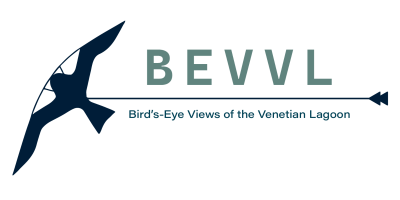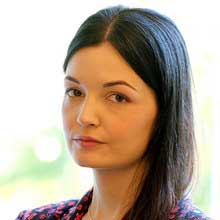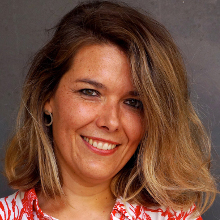Bird’s-Eye Views of the Venetian Lagoon (BEVVL)
Planetary Visions and Birdscapes of an Aquatic Ecosystem
Overview
Nowadays, the bird’s-eye view has turned from an elevated oblique perspective of urban painted scenes into a vertical gaze that produces detailed satellite images perpendicular to the Earth’s surface, appreciated for their scientific measurability.
Focusing on the Venetian Lagoon’s constant monitoring from above, the first part of this project analyses the role aerial and satellite images play in scientific communication of the climate and environmental crises to the public, influencing at the same time the European political agenda since the 1970s. In contrast, the second part challenges the human-centred historical narration of the aerial perspective by reflecting on the literal meaning of the expression Bird’s-Eye View. Offering a cultural history of the bird’s-eye view by studying animal-human-technology interactions, BEVVL contributes to theorising the “distant view” in the Anthropocene epoch. Moreover, it “ecologises” art history and visual studies by investigating more-than-human geographies of the Venetian Lagoon and exploring the role of animals, specifically birds, as sentinels for environmental health.
Research
As an artistic genre and a drawing technique, the bird’s-eye view is the representation of an urban scene seen from above through an oblique perspective.
In Western art, the earliest example of a naturalistic bird’s-eye view is Jacopo de’ Barbari woodcut of Venice (1500), which celebrated the Serenissima as Europe’s premier trading and maritime power.

Nowadays, the bird’s-eye view has turned into a vertical gaze that produces colourful “nadir images” taken perpendicular to the Earth’s surface and appreciated for their scientific measurability. Starting from the 20th century, the conquest of the air – from the first flight experiences to contemporary satellites – has triggered a “spatial revolution” that transformed the relationship between humans and the environment at all levels.

Aerial recordings and satellite images of the Earth have become indispensable for an increasing variety of fields: urban planning, web mapping services, geoscience, environmental monitoring, etc. Considering satellites as witnesses of climate change and tools for creating emphatic connections with our planet is a line of research that has emerged in the last decades. Still, it is rooted in early photographs from outer space, such as the Earthrise (1968) and the Blue Marble (1972), which have raised new questions regarding global environmental consciousness. Planetary vision destabilises and decentres the human, proposing a holistic view of the world in which the concept of the human landscape is expanded to the idea of an ecosystem.
However, the peculiarity of aerial and outer space views has been realised within the military context of the two World Wars and the Cold War, which have also embroiled “the view from above” with the idea of a cold, detached, and hunting gaze. Postcolonial and eco-feminist studies have criticised the use of NASA Apollo mission’s photographs (whole-Earth images) for symbolising the emergence of the “global environment” and the Anthropocene, claiming that the Blue Planet’s cyberoptimism still hides the imperialist ideology of the space race. On the one hand, the constant monitoring of the Earth from space serves to understand and mitigate the effects of climate change scientifically. On the other hand, the cosmic vista has been blamed for publicly conveying a disembodied perspective, which sublimates technology without investigating the responsibilities of environmental degradation while hiding human and animal suffering.
Reflecting on this debate, the project “Bird’s-Eye Views of the Venetian Lagoon. Planetary Visions and Birdscapes of an Aquatic Ecosystem” overturns the anthropocentric point of view and encourages us to explore the birdscape of the Venetian Lagoon by embarking on ecological exercises that will help us to “see” like a bird of the lagoon. Located between land and sea, the Venetian Lagoon supports countless varieties of plant and wildlife species.
Being the largest wetland in Italy, the Lagoon of Venice is a protected habitat mentioned in the European Union’s Habitats Directive as a “priority for conservation” site (part of the Natura 2000 network of nature protection areas and LIFE program) and an “action site” of the EU Horizon 2020 Green Deal project WaterLANDS. Moreover, the Venetian Lagoon is considered a wildlife sanctuary by the Ramsar Convention for wetlands because it is a crucial site for numerous species of coastal wintering, migrant, and breeding waterbird species. Serving as a habitat for an abundant and protected avifauna, the Venetian Lagoon is the perfect place for cultural research on the Bird’s-Eye View. By studying the presence and absence of bird species that inhabit the lagoon over time (including hunted birds and invasive alien groups) as well as human-animal relations in the urban context, this project traces threats to and potentialities of the lagoon landscape while helping us grasp animal features essential for our survival in the Anthropocene.
Research questions that BEVVL addresses are as in the following:
1st phase
- Which roles do scientific images (remote sensing imagery and visualisation of biodiversity loss) play in the national political agenda, regional administrative decisions, and public opinion regarding the conservation of lagoon environments?
- What are the main aesthetic and epistemic qualities involved in science communication of planetary health (macro dimension: GLOBAL) through the case of the lagoon ecosystem (micro dimension: VENICE)?
2nd phase
- How has the avifauna inhabited the lagoonscape over time? How do birds (both migratory and resident) “perceive” a lagoon environment under anthropic pressure?
- How are the lagoon’s more-than-human inhabitants perceived, represented, and preserved nowadays? To what extent have natural sciences, humanities, and arts recognized animals as sentinels of climate change and custodians of environmental health?
- In which ways can the field of animal studies “ecologise” art history and visual studies?
Methods
BEVVL is an interdisciplinary research project consisting of two interrelated parts. It begins with an iconographical analysis of the Venetian lagoonscape, examining art pieces, popular photographs, movies, maps, digital platforms, and technical images used for science communication over the past 50 years. This first part tackles the topic of representations of the lagoon (from the air and outer space) by employing the tools of art history, visual and media studies, and the history of cartography.
The second part of the project studies the work of ornithologists, birdwatchers, wildlife photographers, naturalists, experts in bioacoustics, and educators in connection with the Natural History Museum of Venice. This section also includes an analysis of artistic interventions in the public space and citizen science activities concerning the avifauna.


This part of the project aims to understand how different groups of experts and amateurs interpret the landscape and soundscape of the Venetian lagoon and which technological devices support human observation and acoustic perception of migratory and resident waterbirds. Multispecies ethnographic methods will explore this “birdscape” by interweaving science and technology studies, animal studies, and environmental history.
Activities
Conferences and workshops participations
- 4-5 December, 2025: International Conference “What Lies Ahead for Art History & Visual Studies?”, event organised for the 150th anniversary of Art History at the University of Oslo, Norway. Paper presented: “Visual Interpretations: Art History in the Age of Imaging”.
- 22-24 September, 2025: International Conference “Beyond Infrastructure? (Un-)built Environments in the Anthropocene”, Department of Social and Cultural Anthropology, University of Vienna, Austria. Paper presented: “Cracks in the Glass Wall. From Connection to Collision with the More-Than-Human World”.
- 12-13 June, 2025: CLIMASAT International Workshop “Greening Satellites”, Institut d’història de la ciència, Universitat Autònoma de Barcelona, Spain. Paper presented: “Remote Sensing (of Environment): Exploring the Term's Origins”.
- 3-4 October, 2024: 3rd International Anthrozoology Conference "Perspectives of the Human-Animal Relationship", University of Debrecen, Hungary. Paper presented: “Sensing a Lagoon through the Cormorant Dimension”.
- 25-27 September, 2024: 5th Spatial Humanities Conference, Otto-Friedrich-Universität Bamberg, Germany. Paper presented: “Bird’s-Eye Views of the Venetian Lagoon: Mapping Animal-Human-Technology Interactions”.
- 7-9 August, 2024: International Conference “Counter-Imagee. Visual Culture and Ecological Thinking", Santa Catarina Federal University, Florianópolis, Brazil. Paper presented: “Searching for the Bird in the Bird's Eye View”.
- 22-27 April, 2024: International Conference “POM – Politics of The Machines. Lifelikeness & beyond”, RWTH Aachen University, Germany. Paper presented: “BIRDLIKENESS: Understanding Bird Behavior in Hunting, Aviation, and Architecture”.
- 25-26 January, 2024: Interdisciplinary Workshop “Mapping Animals in Global Spaces”, Kunsthistorisches Institut in Florenz – Max-Planck-Institut, Italy. Paper presented: “Flying Visions, Atmospheres, Chicken Eggs: The Bird Space in the History of Photography”.
Organised events
- 28 October, 2025: Baldacci, Cristina; Quagliati, Noemi (organisers). Symposium “A Sensitive Matter: More-Than-Human Agencies and the Histories of Photography”. In Art Ecologies series - 28/10/2025, in collaboration with THE NEW INSTITUTE Centre for Environmental Humanities, Ca’ Foscari’s Department of Philosophy and Cultural Heritage, Malcanton Marcorà (Aula Biral), Venice, Italy.
- 22-24 October, 2025: Kleemann, Katrin; Quagliati, Noemi; Will, Fabienne (organisers). International Conference “Planetary Waters – A Challenge Between Abstraction and Empathy”, German Maritime Museum, Bremerhaven, Germany. The event is funded by the Leibniz Institute for Maritime History and the German Research Foundation (DFG), and supported by THE NEW INSTITUTE Centre for Environmental Humanities, UNESCO Chair on “Water Heritage and Sustainable Development”, Deutsches Museum and Munich Science Communication Lab.
- 9 May, 2025: Graesse, Malin; Quagliati, Noemi (organisers). Workshop “Sensing the Environment”, Environmental Humanities Laboratory, KTH Royal Institute of Technology, Stockholm, Sweden.
- 19 June, 2024: Baldacci, Cristina; Quagliati, Noemi (organisers). Artist Talk: Axel Braun on “Disturbed Harmonies. Anthropocene Landscapes”. In Art Ecologies series - 19/06/2024, in collaboration with THE NEW INSTITUTE Centre for Environmental Humanities and Deutsches Studienzentrum in Venedig, Ca’ Bottacin, Venice, Italy.
Publications
- Quagliati, Noemi. “Reflections on Photography and ‘Flight’. Encounters with Human and More-than-Human Lives in Transit”. In “Nomadic Camera. Photography, Displacement, and Dis:connectivities”, edited by Burcu Dogramaci et al., Leuven University Press (forthcoming).
- Quagliati, Noemi. “Sensing a Lagoon: Distance, Care, and Cormorants”. In “Lagoonscapes. The Venice Journal of Environmental Humanities”, no. 5 (2025), 91-120.
- Quagliati, Noemi. “Views of Venice”. In “The Anthropocene Waterscapes of Venice”, edited by Pietro Consolandi and Pietro D. Omodeo. Venice: Venice University Press, 2025, 43-46.
- Quagliati, Noemi. “Il paesaggio aereo: quando l’orizzonte manca”. In “Orizzonti del paesaggio. Sguardi e discorsi sulla cultura visuale italiana contemporanea” [ITA], edited by Malvina Giordana and Mattia Cinquegrani, Quaderni del CSCI: Rivista annuale di cinema italiano, no. 20 (2024), 59-68.
Team
Noemi Quagliati
Principal Investigator
Cristina Baldacci
Supervisor
How can I collaborate with BEVVL?
If you would like to collaborate on or report on any specific project, initiative, or story linked to the “birdscape” of the Venetian Lagoon and even beyond this particular geographical area, please do not hesitate to contact the Principal Investigator (noemi.quagliati@unive.it).







